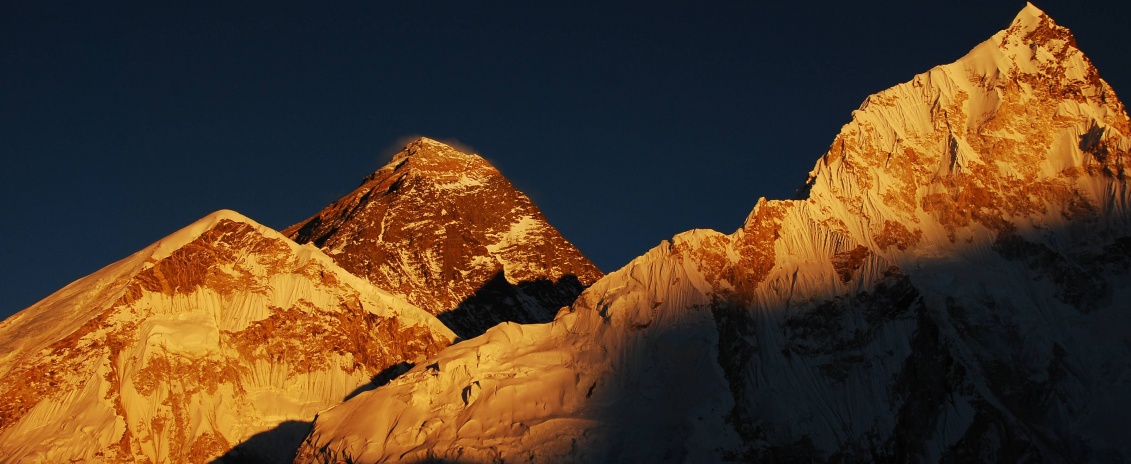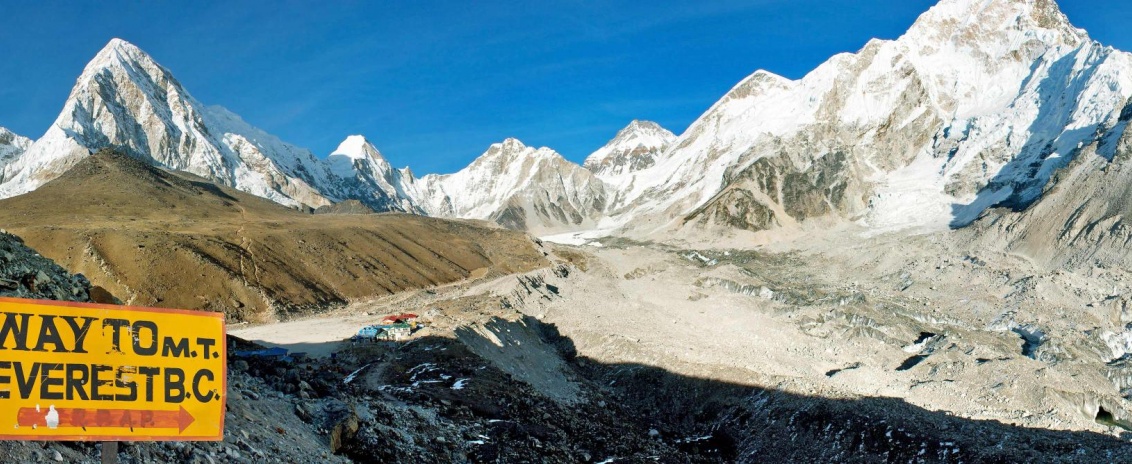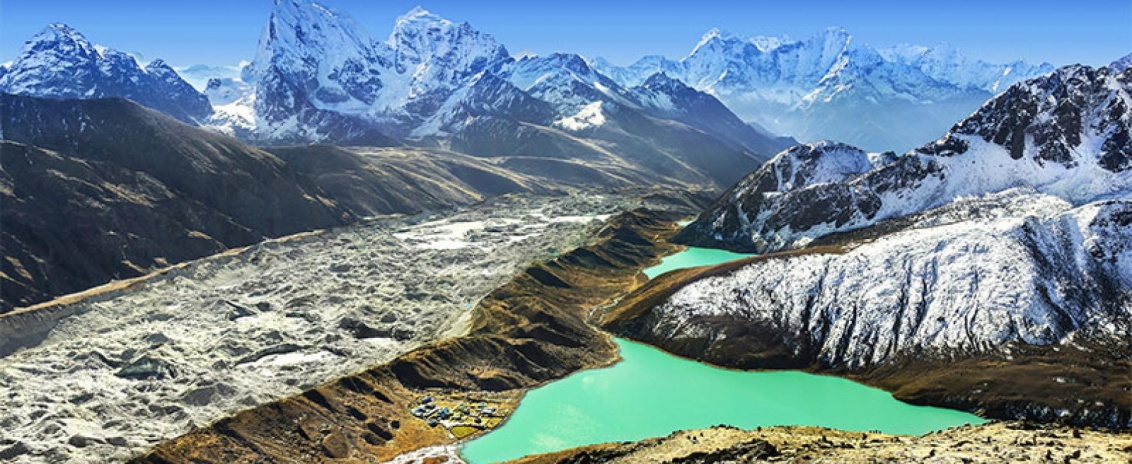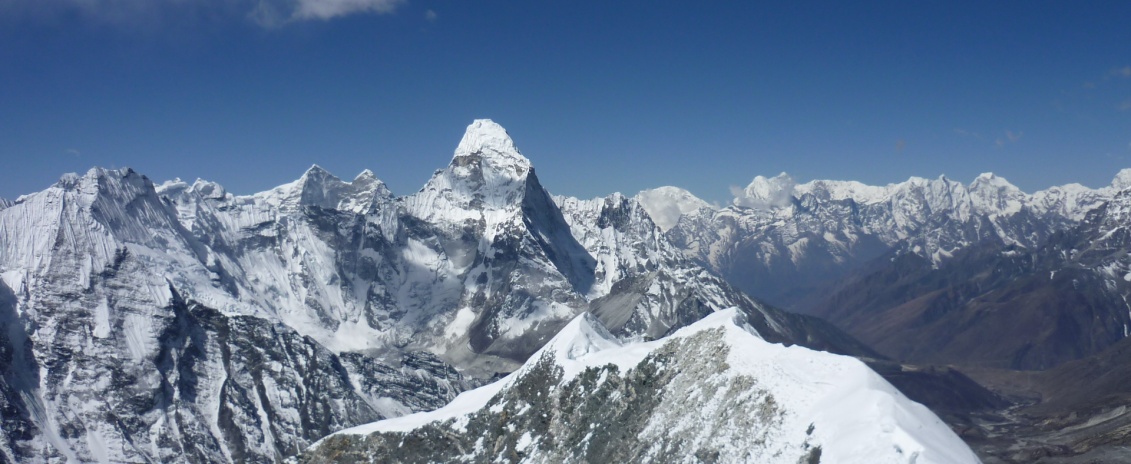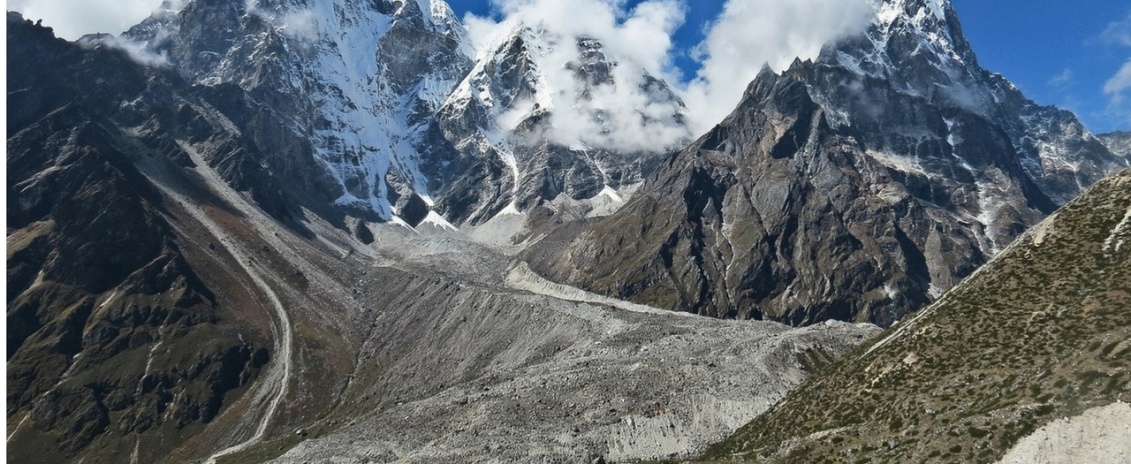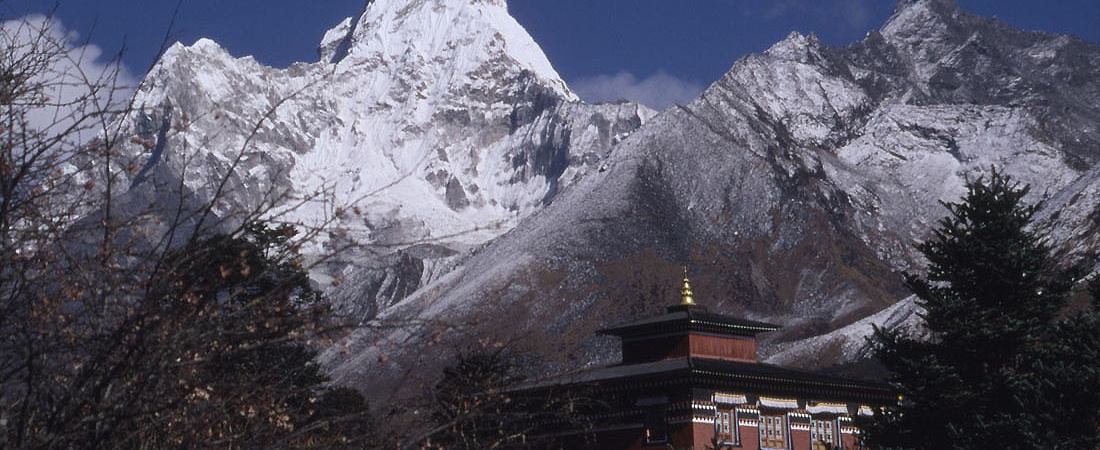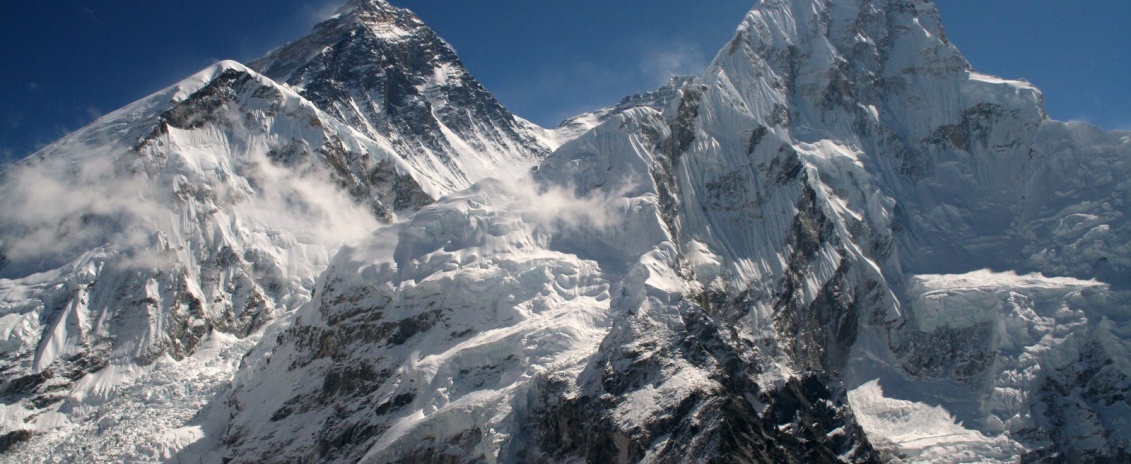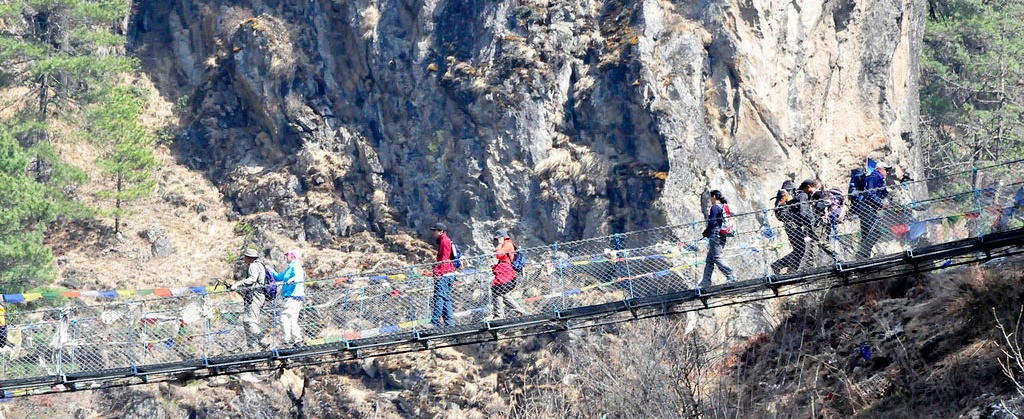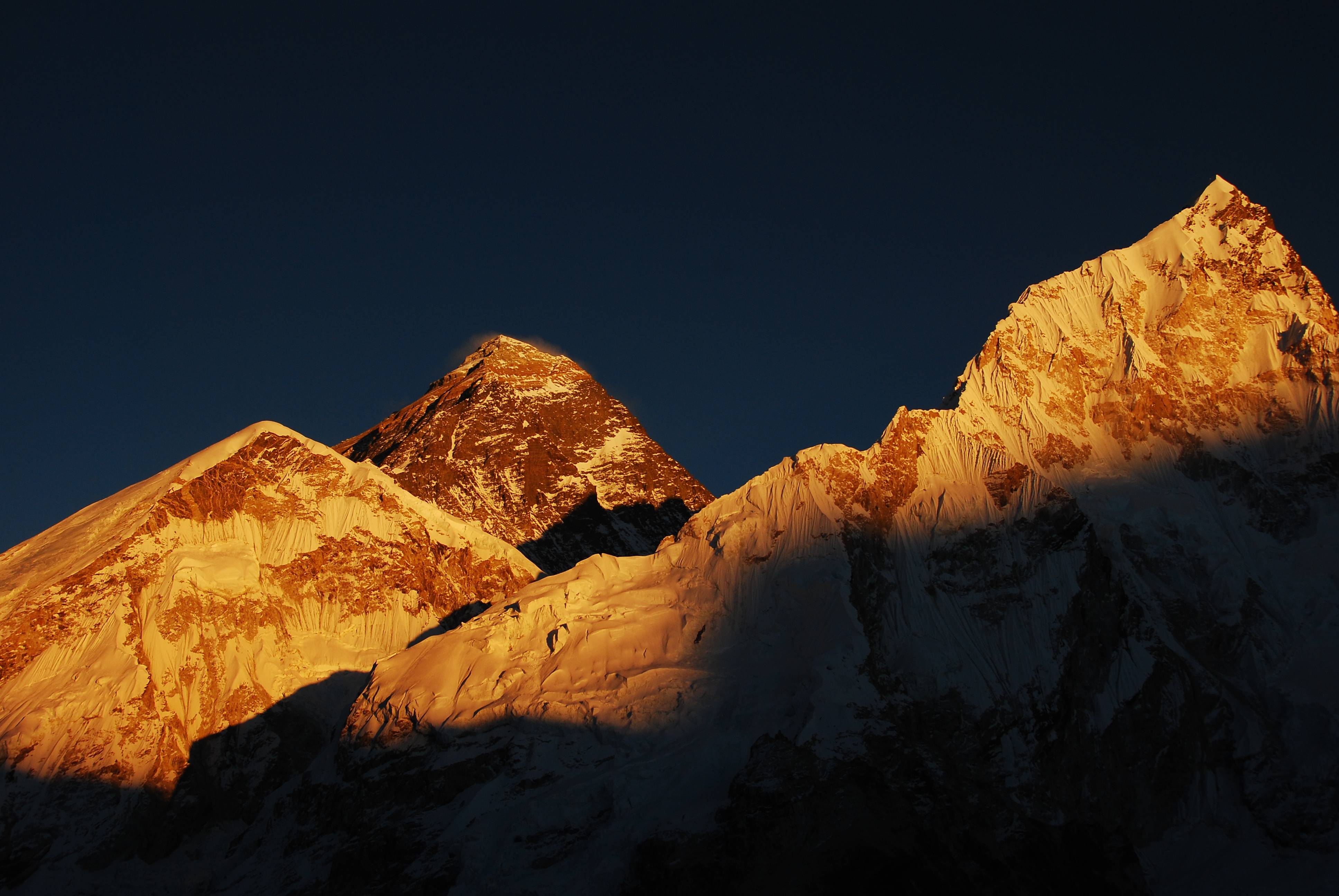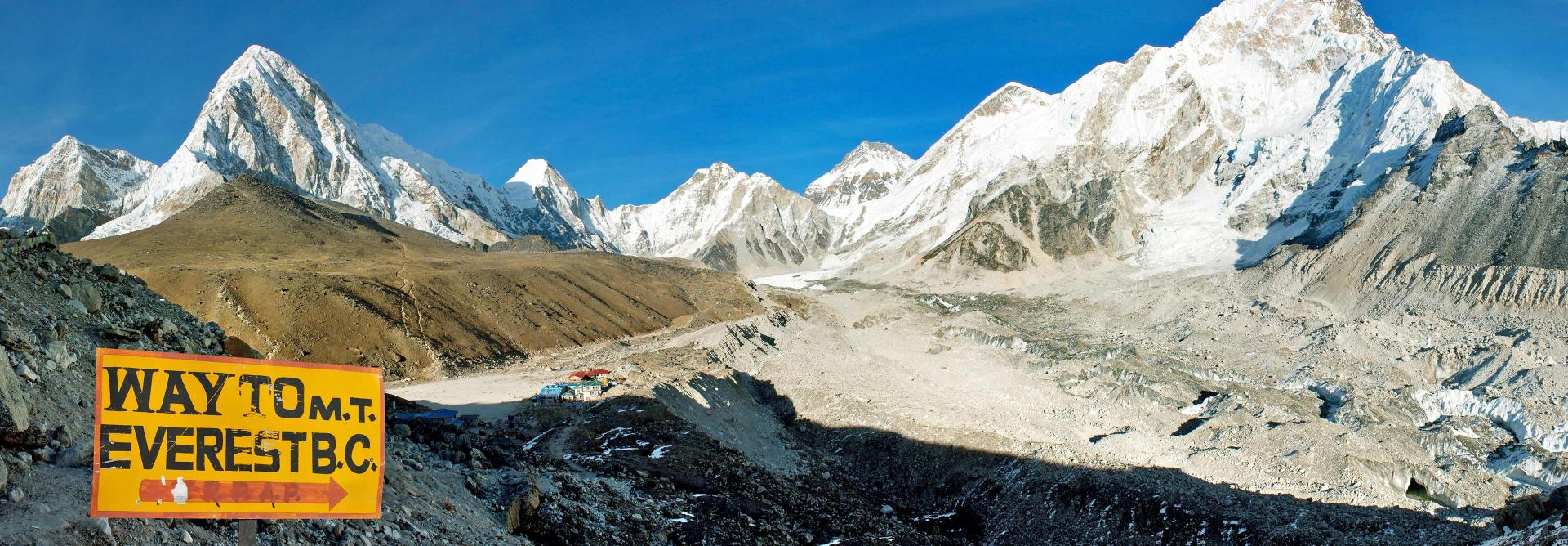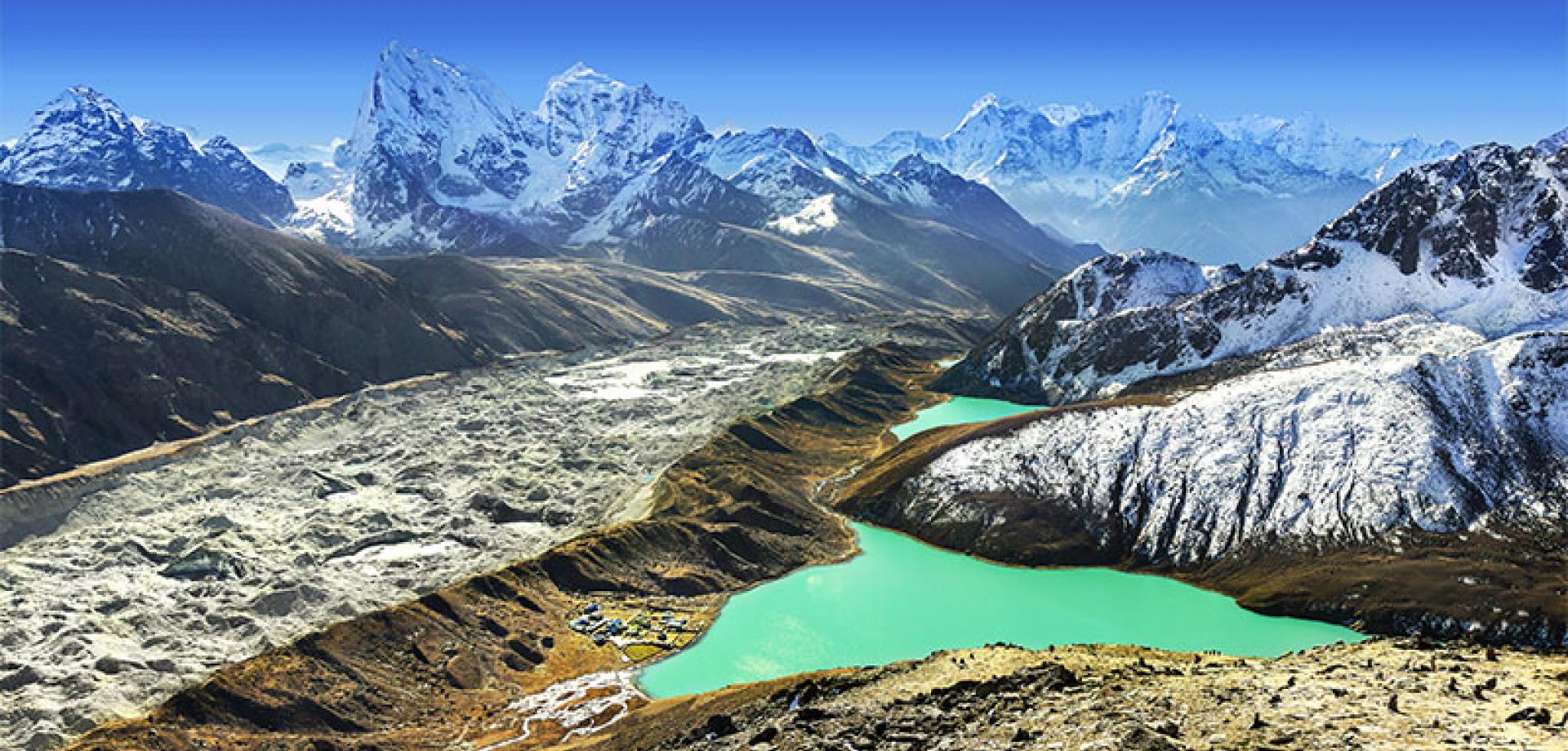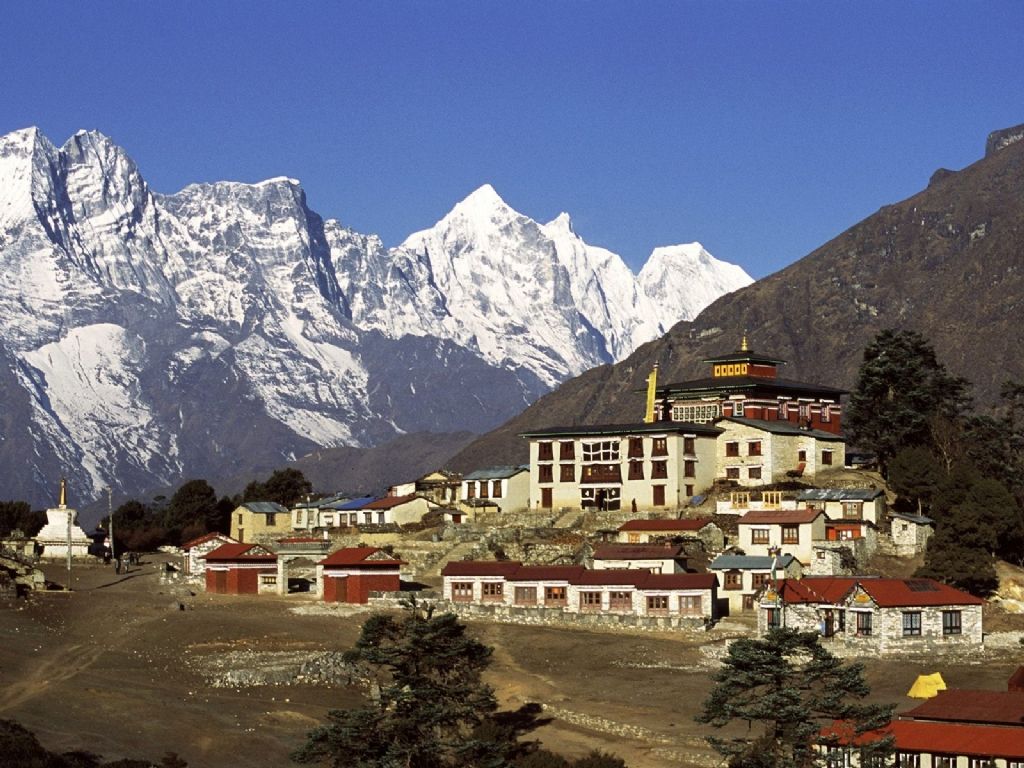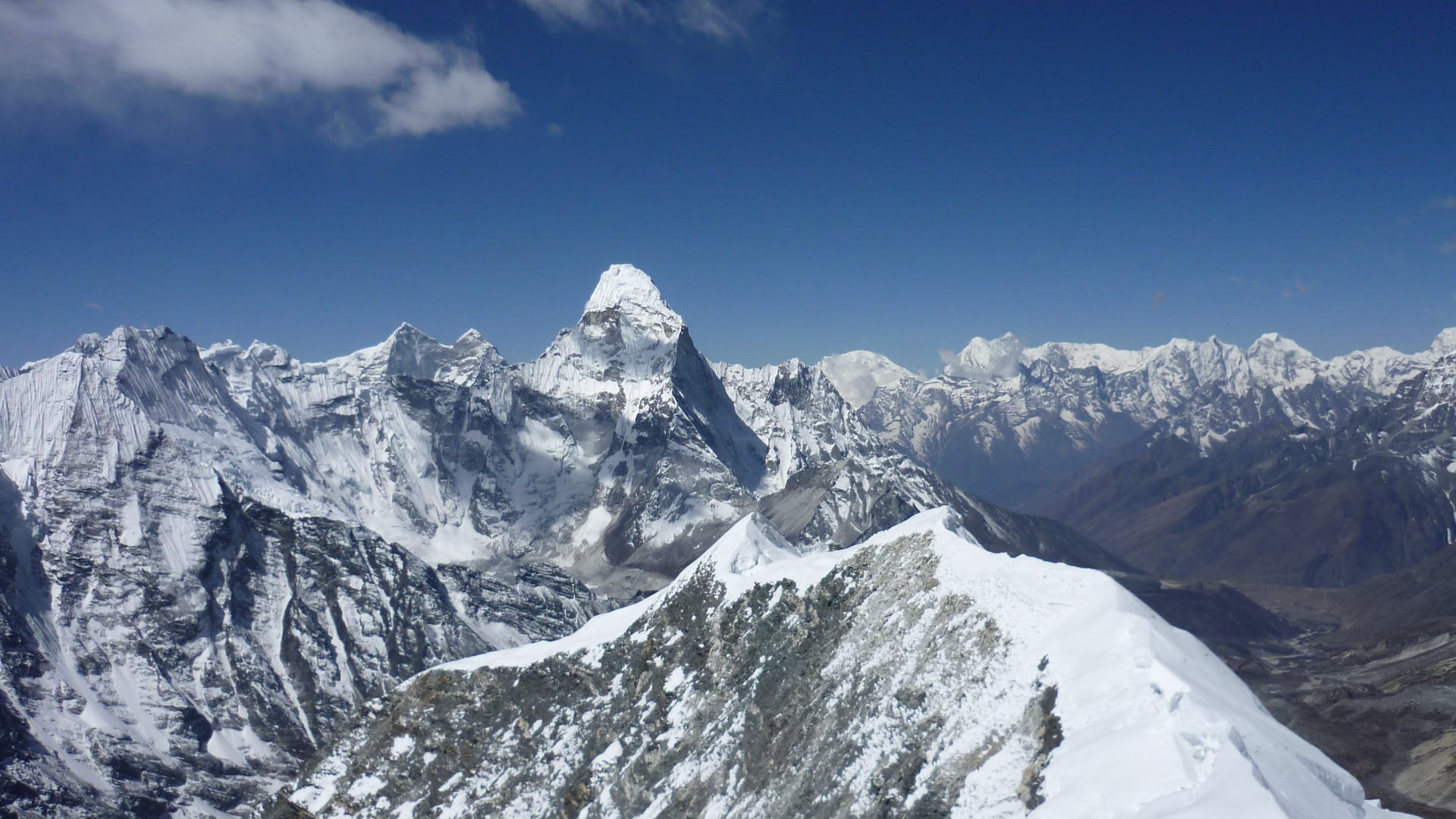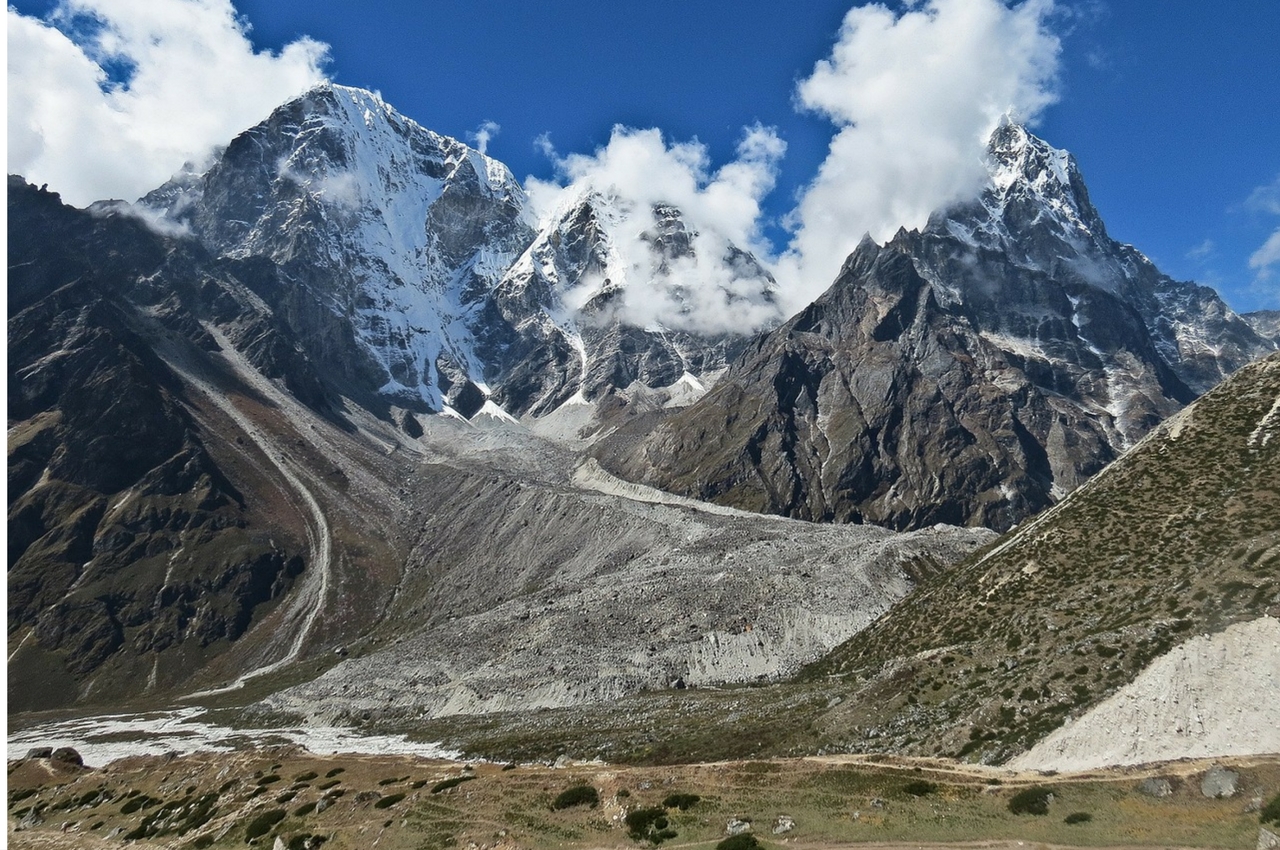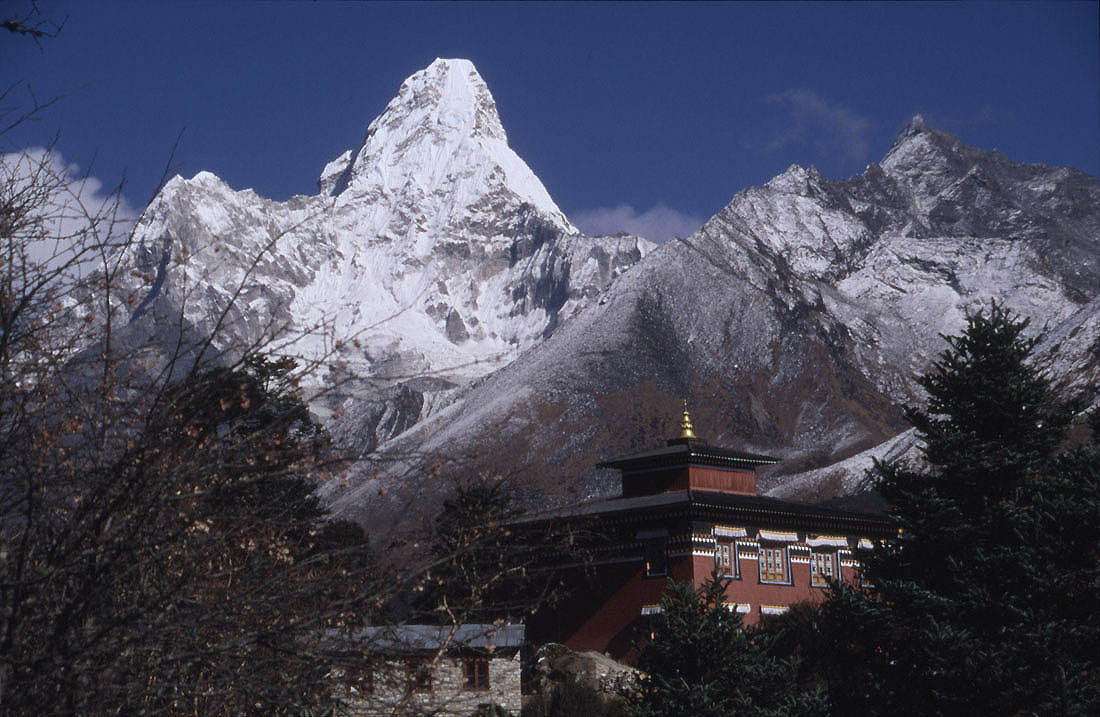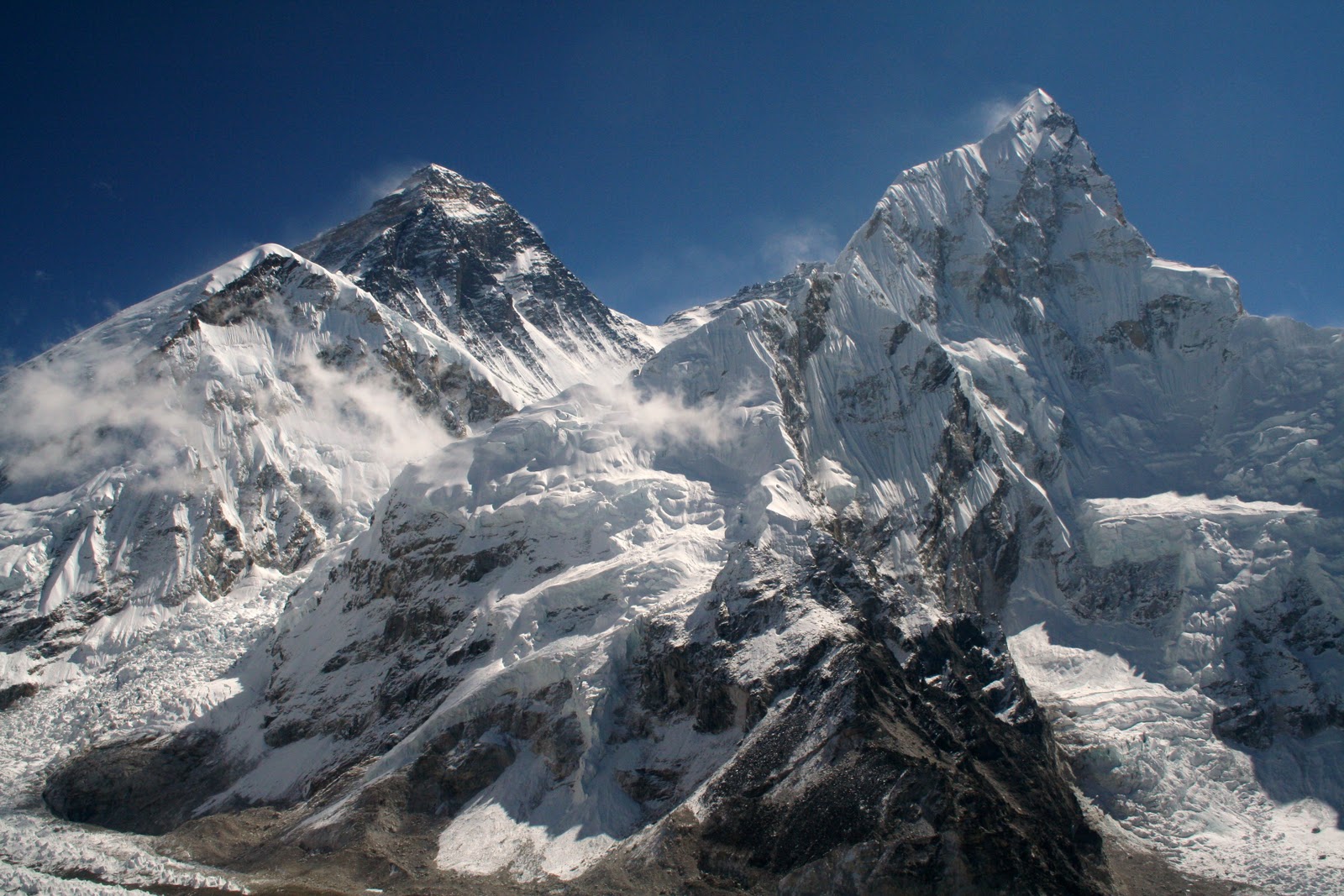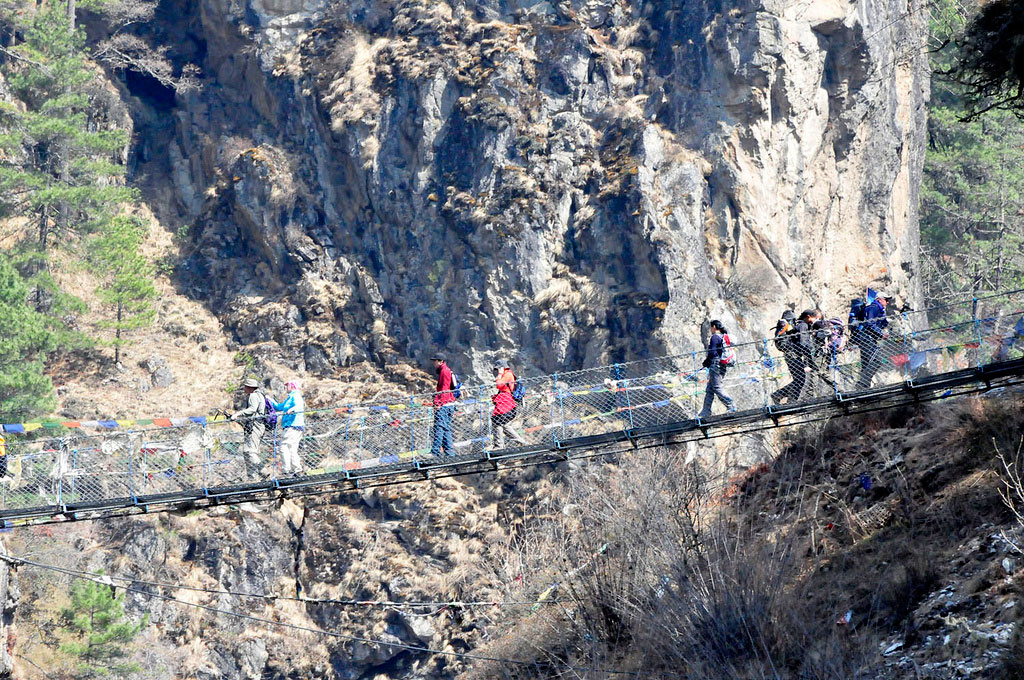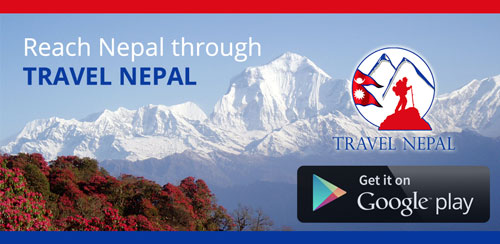This trip is a sweet twist to the classic Everest Base Camp trek. Although it's a sweet trek but there are real dangerous adventure. Don't get too scared it's not that dangerous either but it's comparatively more tough trekking than other on the Everest region. This trekking has a full package of adventure consisting of classic Everest Base Camp Trek, Cho La Pass , Gokyo Lakes , Khumbu glacier and many other. This trek passes through the steep ridges, beautiful rhododendron and pine forest , many rivers and streams gradually leading to one of the most beautiful place on the earth.
This trek as similar to other Everest Region, which begins from Lukla. We will fly to Lukla which is also the starting and ending point of our trek. Then we will head to Namche, Dole and to Gokyo Ri. Lakes at high altitude are frozen in the Winter. In Autumn and Spring you will see the reflections of mountains in the blue green water of the lake. This trek has another highlight which is the Cho La pass. A steep walk on the rocks of the Everest is not a simple job to do. Know and experience more adventure when you yourself take on this adventure.
Cost Includes:
14 night accommodation with 3 meals a day during trek
2 night accommodation in Kathmandu on Bb plan
All entrance and Permit charge
Licensed Guide and Porter
All transfer; airport drop pick up
Round trip air fare Kathmandu-Lukla
Farewell Dinner
DAY 01: Arrival
Welcome to Nepal. First day you’re in Nepal. Our
representative will be at the airport to receive you and transfer to Hotel. Our
manager will meet you at hotel or where convenient and brief you about the trek
along with introduction to guide of the trek. Overnight at Hotel on B plan.
DAY 02: Kathmandu to Lukla
flight to Phakding ( 2,800 m)
After breakfast, our staff will take you to Tribhuwan
International Airport for departure to Tenzing-Hillary Airport, Lukla. In these
40 minutes flights you can enjoy beautiful view of Himalayas. At Lukla, our
other staff will receive you. After short rest and briefing by our guide our
trekking now practically begins. Today's destination is Phakding which is about
3-4 hours from Lukla. In order to accommodate the elevation we have a short walk
on foot. Our trail passes through Buddhist monasteries, small stupas, lovely
Sherpa community while our today's destination is Phakding where we will end
our first day trek. Overnight at
Phakding.
DAY 03: Phakding
Walking to Namche Bazaar (3,440 m)
After breakfast, today we walk through the beautiful pine
forest, and then cross the Dudh Koshi River. 2nd day trek is full of natural
scenery. In addition to this one can also feel the tranquility of the fir and
the cypress forest. If the weather is fine, you can even catch a glimpse of
Mount Everest. Namche is the gateway to the Himalayas. It is also the entry
point of the Sagarmatha National Park. At the entrance of the national park
permit is required which will be arranged by our guide. After lunch, we will continue to trek
crossing the Hillary Bridge. After the Hillary Bridge, it is a bit difficult as
the trail goes steeper. You'll be staying overnight at Namche where dinner will
be served.
DAY 04: Namche Bazaar (3,440 m)
In order to adapt to the altitude we take a day break. We
need to acclimatize to the altitude, so we will hike to Everest View Point.
Those who are interested to explore the village have options to visit to the museums or
roaming around the biggest marketplace of Everest region.
DAY 05: Namche to Dole (4,110 m)
After a day rest, we will now continue to trek uphill towards
Dole. We will climb the Khumjung hill and then go downward direction to the
valley where we will take turn to the north. We will continue to walk Moon La
pass where trail climbs steep through rhododendron and birch forest. Then pass
via Phortse Thanga and stop for today at Dole.
DAY 06: Dole to
Macchermo (4,465 m)
Today is a short day of trekking. You won’t require more
than 5 hours reaching Macchermo. So take it easy and walk slowly enjoying the
natural beauty. As we keep on walking route offers the beautiful views of mountains; Cho
Oyu, Kantega and Thamserku. We will pass through Labarma and Luza villages before
reaching Machhermo.
DAY 07: Machhermo to
Gokyo (4,720 m)
We will begin today with a short steep climb, which leads
from the Machermo Valley through the
terminal moraines of Ngozumpa Glacier. A steep rocky incline leads into the
valley by the side of the glacier and passes the first of the holy lakes known
as Longpongo, at 4690 m. At the sight of the second lake, Taboche Tsho, we
become mesmerized by the shimmering turquoise blue sheet of water sparkling in
the sun. Gokyo village stands by the third lake and Cho-Oyu Mountain as a
backdrop sets a spectacular sight here. Lastly we explore around the
third lake, Dudh Pokhari with overnight stay at Gokyo.
DAY 08: Gokyo – Rest
Day
Today we will rest at Gokyo to acclimatize with the high
altitude. So today we have couple options to spend a day; one is to hike 4th and
5th lakes. If you still wish to hike you can climb a hill, also called the
Scoundrel's Viewpoint, which is located at the edge of the 5th lake. From here
we get astounding views of Cho-Oyu, Gyachung Kang, Everest, Lhotse, Nuptse, and
Makulu mountains. Another option would be hike to Gokyo Ri. For this you will
have to start with a steep climb up Gokyo Ri. This towering peak sits above the
village on the northern edge of the lake where panoramic views of Everest,
Lhotse and Makalu come into focus. If there is plenty of time remaining you can
hike to the 4th and 5th lake. Overnight at Gokyo
DAY 09: Gokyo to Thaknak ( 4,700 m)
Today is an easy trek day but today is also a very special
part of trekking as you will cross Ngozumpa glacier, which is the longest in
Nepal. Make sure you start the trek early so that glacier still remains solid.
If there is bright sun shine then glacier will melt making the route slippery
and risky. After arrival at Taknak take rest and get well-prepared for
tomorrow’s adventure.
DAY 10: Thaknak to
Dzungla (4,830 m)
After quite easy days of trekking, today we will take on the
toughest trekking trail of this route. The trail is vertical and the rocks
glazed by ice may cause trouble by making the trail slippery. After crossing
the pass we will continue walking the trail which is decorated with prayer flags
and then descend steeply towards Dzongla. Dongla offers exceptional views of
Kyajo Ri, Tengkangpoche, Numbur, Kangchung, Ama Dablam and Cholatse along the
way.
DAY 11: Dzungla to
Gorakshep (5,140 m)
Today we will take downhill walk to get Gorakshep. We will
pass via Kalapathar.
DAY 12: Gorakshep to
Everest Base Camp to Gorakshep
After breakfast, we continue to move ahead to the Indian
soldiers’ climbers’ commemorative point. We strictly suggest you to please
follow the guide and then move forward. Before you reach to the Everest base
camp you need to walk through the rock dunes, moraine and streams. At the
arrival of the Everest base camp, you can see the bright colors on the gray
environment of the monotonous (especially in the spring) mountaineering tents.
You'll now see the unbelievable views of breathtaking Himalayas. What's more
interesting is that you will feel yourself between the mountains so beautiful
so pure. According to our guide's instructions you need to take back way to
Gorakshep where you'll stay overnight.
DAY 13: Gorakshep to
Kala pathar to Pheriche (4,371 m)
We will start to trek before dawn breaks; this morning
will be chilling cold so get covered with warm clothes. Make sure you bring the
headlights, hand lights and other equipment as instructed by our guide. In
addition to the cold weather there is wind blowing sometimes. We will start
early to catch perfect sunrise view in the Everest. We will head towards Kala
Pathar (5545m) from where you can enjoy the 360-degree snow-capped mountains
scenery. Along with 360˙degree view of
Mt. Everest you'll also see view of Nuptse, Lhotse, Khumbutse, Pumori,
Lingtren, Amadablam, Thamserku, Lobuche peak and other peaks all around. This
is a lifetime rarely fulfilled dream of many so make sure your camera is ready
to take some spectacular shots. After few hours of excursion now we will return
back to Gorakshep, have breakfast and continue to trek down to Pheriche. We
will have overnight stay at Pheriche.
DAY 14: Pheriche to
Namche
From Pheriche we will now walk downhill towards Namche.
Today is another longest day which might be a little tiring. You'll have to
walk for around 7 hours to get to Namche. Don't rush take it easy and enjoy the ending days in the mountains. By late afternoon you will reach to Namche.
Dinner and overnight stay at Namche.
DAY 15: Namche to
Pkahding to Lukla
Today we will again go down the mountain, there are stone
steps so be aware and pay attention to each other's security. We continue to
walk through the rhododendron forest, cross the Hillary Bridge and then here
you are to Lukla. Today is the last night in Lukla so make best of it. Spend
rest of night as you want but make sure your bag is packed well and don't get
late for tomorrow's flight to Kathmandu. Overnight at Lukla.
DAY 16: Flight to
Kathmandu
After more than a week living in the mountains today you
return to Kathmandu. You will take short flight of appx 40mins. Now you have
wonderful memories of beautiful Everest with you. After your arrival on
Kathmandu airport, our guide or representative will transfer you to hotel. As
“thanks for choosing us" and a farewell we will provide you lunch or
dinner as you want. During our meal you can share your experience of the trek.
We all will celebrate again together with all the member of Nep Travels who
contributed to make this tip successful.
Day 17: Departure
Last day in Nepal. Please be ready at the lobby of the hotel at least 3 hours before your flight back to home. Our representative will drop you to airport. If you love the mountains, we guarantee that your heart will always desire to visit Nepal again so please keep in touch. End of our service
Cost Excludes:
Visa Fee (free for Indian, Chinese and SAARC nationalities except for Afghans)
Lunch and Dinner in Kathmandu
Travel Insurance
Rental charge for sleeping bag and down jacket
Expenses during trek like charging electronic devices, WI-FI, hot shower, toilet paper rolls, mineral water, and other personal items
Tips to guide and porter
Travel Insurance:
About the travel insurance we suggest our guest to take those insurance which covers all emergency case or other travel related injury during your travel in Nepal. However, this is optional and it depends on your opinion. If you are buying any insurance you can buy which covers for a week or only for days you will be in Nepal.
There are many insurance companies, but we suggest you to get World Nomad. They have emergency evacuation even up to 6000m. But before you get it make sure you are covered for such evacuation. For those who already have insurance of other company, make sure if it covers travel insurance in Nepal and especially evacuation up to 6000m. Link for World Nomads is www.worldnomads.com
Cancellation and Refund:
Although it’s rare but sometimes we might cancel trip due to some internal problems, in such a case you will be refunded full amount of package. If guest wish to cancel trip then money will be refunded as following:
Cancelled one month before arrival full refund
Cancelled 15 days before arrival 75% refund of total cost
Cancelled one week before arrival 50% of total cost
Cancelled less than a week 25% refund of total cost
No Show No refund
Equipment and
Accessories
Trekking on the high altitude area there is some requirement
of equipment.
Sunglasses
Sunhat, cap or Scarf
Woolen hat
Head light and torches
Gloves
Thermals
Fleece
Comfortable trekking boots
Fleece pants
Jackets, down jacket
Sleeping bag rated to -20°C
Trekking poles
Trekking bag or Duffel bag
Water bottle
Sunscreen
Toiletries
Spare battery (if you
have any to charge your electronic devices on the way)
- What permits are required and who will arrange it for us?
For every trekking, either short or long you will require permits. For all trekking region you will require TIMS (Trekker's Information Management System). We will get it for you and you should prepare a photograph for it. Another is National Park permit. For every trekking region which falls under national park or conservation area, you will require permit. Another is for trekking in restricted area like Upper Mustang and Upper Dolpo where you will need a special permit which will be given for a week or limited days. If permit gets expired you will have to pay extra per day.
- Is there any arrangement for single travelers?
Whether you are single or traveling with group, a long as you are traveling with Nep Travels, you will be given a guide. If you are single and want a porter, you have to pay extra $11 per day for a porter. If there is more than one person then, one porter will be provided automatically. Generally, we have porter in 2:1 ratio; two trekkers will have one porter.
- What communication options exist while trekking?
Don't forget you are trekking in the remote areas. However, access to mobile and internet is expanding so you can communicate using local mobile card and internet. Many routes offer local VHF phones, while more remote trails, a satellite phone is the only option. Connections are interrupted frequently but it's still OK considering place you are traveling.
- What is Altitude sickness? What is acclimatization?
When you are trekking in mountain, as you go upwards oxygen in air decreases. Sometimes you might feel headache, vomiting and nausea followed by dizziness. So when you see these symptoms, you might be suffering from Altitude sickness. So, if you have any such symptoms immediately tell your guide. To avoid altitude sickness you will have to take rest and let your body adjust to the surrounding which is called Acclimatization. If you feel too difficult even after acclimatization the best option is to descend rather than to wait for any rescue.
- What to do in emergency cases and injuries?
If there is small injury or accident, then our guide will provide you with first aid. All our guide have received first aid training so this will not be a serious matter. However, your safety comes first. If there is any big accident, then we will take you to nearby hospital. If there is case of emergency than we will immediately contact your insurance and you will be rescued by a helicopter.
- How will the case of incomplete trip be handled?
There is rare chance of incomplete trip. However, if there is such incident then we are sorry and please understand we cannot refund you money that you've paid. All the arrangements are done before your arrival, so we have to pay in advance for hotels, lodges, guide and porter. Permit and TIMS once used cannot be refund, so we will not be able to refund your money. If due to climate reasons or our technical problem you cannot start trek, then you can change trekking package and switch to another one.
- Can I travel alone without guide, just with a porter?
Well it’s your choice whether you want a guide or not. But what we suggest you, is to take a guide because there are thousands of solo traveler missing in Nepal. If there is a guide to assist you, you don't have to worry about where to stay for a night; how to find your way, how do you arrange your everyday trip and how do you take care of yourself if there are any bad happenings. Moreover, mountains are not like city area where you will find many to communicate, In the mountain very few speak English, and we remind you not to believe anyone you meet on the way because there are good and bad people everywhere.
- What age people can trek in Mountains?
There is no limit in age unless you are below 18 yrs old. Everyone can trek if their physical strength allows them. If there is kid interested, then he/she must be accompanied by his/her parent. For those above 18 don’t have any restriction. Before you choose any trekking destination consult with your physician and then go for that which you can complete.
- How long is the trekking? How long will be the walking trail?
Trekking depends on the kind of package you choose. There are packages of a week and even of 3 weeks and more. When you are trekking average hour you will trek is four to six hours, in some cases 7 hours a day, which will be minimum of 7km and maximum 15 km of walking in a day.
- Is it compulsory to have previous trekking history?
No, if this is your first time then it's OK. Not all the trekkers have previous experience. There are many beginners who do well than those experienced ones. Before you come to Nepal indulge yourself in some walking or stamina building sports, so that it becomes easier for you to even walk for 6 hours a day.
- What things do I need to prepare before coming to Nepal?
Documents:
You will require documents like passport, color copies of passport, passport size photo graphs, if you are below 18 and travelling with friends, you will require a written document by your parents (travel agreement), if you are going under medication, written prescription by doctor is required. Besides these, if there are any other compulsory documents we will inform you during booking. For any other information you can check our travel essentials where information about Customs, Visa and Travel tips is given.
Equipment:
You will require that equipment which is listed in Equipment list. Please check there. You are free to carry other item if you need even if not mentioned in the list.
Travel Insurance:
Apart from this, most important thing you will require is Travel insurance. As, we've said it's optional but it’s better if you have one. There are many insurance companies, but we suggest you to get World Nomad. They have emergency evacuation even up to 6000m. But before you get it make sure you are covered for such evacuation. For those who already have insurance of other company, make sure if it covers travel insurance in Nepal and especially evacuation up to 6000m. Link for World Nomads is www.worldnomads.com
- When should I travel to Nepal?
Nepal has two tourist seasons one is spring and other is autumn. Spring season is February to May. Autumn is late August till mid-November. Summer in Nepal receives heavy rainfall which makes trails slippery and dangerous. There are many avalanches in Mountain during this time, so we suggest not to travel during summer. Another is winter; winter in mountains is too cold. Temperature drop to -20°C. There is snowfall and due to bad weather flights even get cancelled for 1 week. So, it’s better not to travel in winter as well.
- What sort of accommodation and food will be in mountain?
Everything in the mountain will be basic. You will stay in tea houses which is lodges and small hotels in the trekking routes. Accommodation will be in twin sharing basis. You will be given three meals and a drink (coffee, hot chocolate, tea) a day. You can choose your meal in some places like Lukla and Namche where there is accessibility to good food. As you go up wards, you will be served simple food. We suggest you to order vegetarian food because meat in mountains are not fresh and you may easily suffer from Diarrhea. Mineral water in mountain is expensive than city and it gets more expensive as you go upward. You can buy water purifying pills and drink water which is served in local hotel and lodges by purifying yourself.
- What do I need to pack?
This basically depends on which season of year you are traveling. If it is autumn then you should keep in mind that winter is approaching, so it will be cool. If it is spring then you should be aware it gets warmer day by day. Generally in all kind of trekking you will require, a down jacket, a warm fleece jacket, thermal underwear, trekking pants and shorts, trekking boots, a thermal sleeping bag, backpack, and camera. Carry light and few items as much as possible. Just make sure you have all the necessary equipment and clothes. Too much overpacking will trouble you in the end. If you are under medication, carry your medicine. If you want to bring something with yourself for the trek but you don't have it right now, we suggest you not to buy such things. Almost all the necessary gears can be easily bought or be rented at shops in Kathmandu.
- How much weight will porter carry?
In an average porter will carry 5kg to 15kg. We recommend you to carry bag of 10-15kg (max.) weight. Try to carry few items as possible. You have to carry your important stuffs by yourself like camera, passport, small day bag and other food (chocolates, energy drinks). Rest other will be carried by porter. So you will have two bags during trekking, one carried by porter another carried by yourself.
- What about tips to guide and porter?
Well, tips are optional. If you are happy with service then you can tip as much as you want. Many guests avoid tipping to guide and porter. However, guide and porter work hard to make your trip successful, so they expect something from you. So, generally we suggest $80 as tip to porter and guide. Then they will divide within each other. If you are in group then, collect $80 per person then divide equally to guide and porter. We fairly said you the idea of tipping, if you have any other questions related to tipping, please mention them during booking.
All Inclusive Price.
$ 1600 USD
Estimated Time
17 days
*CONTACT US FOR DEPARTURE DATE
Customize this trip.
- Number of members ? No problem.
- We can customize as per your need.
- We will help you to make this trip fit in your budget.
- Contact us for more information and enquiry.
Trip Facts
- Duration:17 Days
- Highest access:5,545m
- Group Size:2-10
- Best Season:Spring, Autumn
- Accommodation:Tea Houses
- Difficulty level:



 (Hard)
(Hard)





